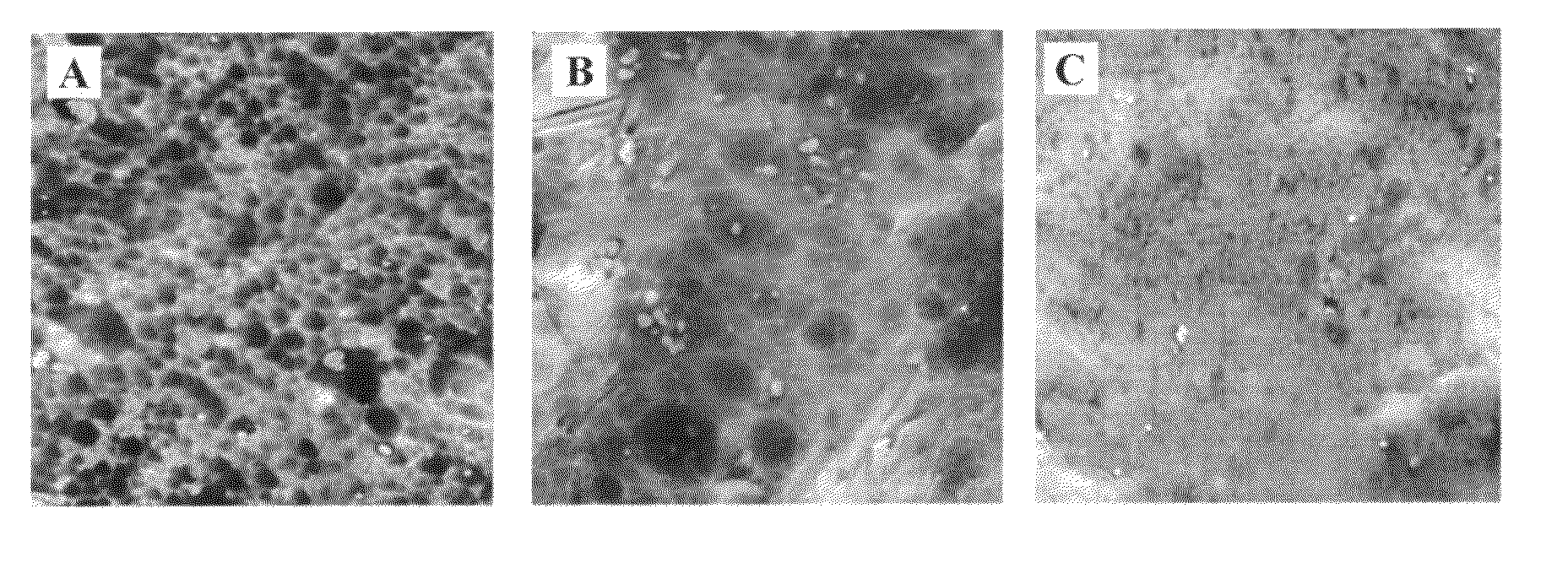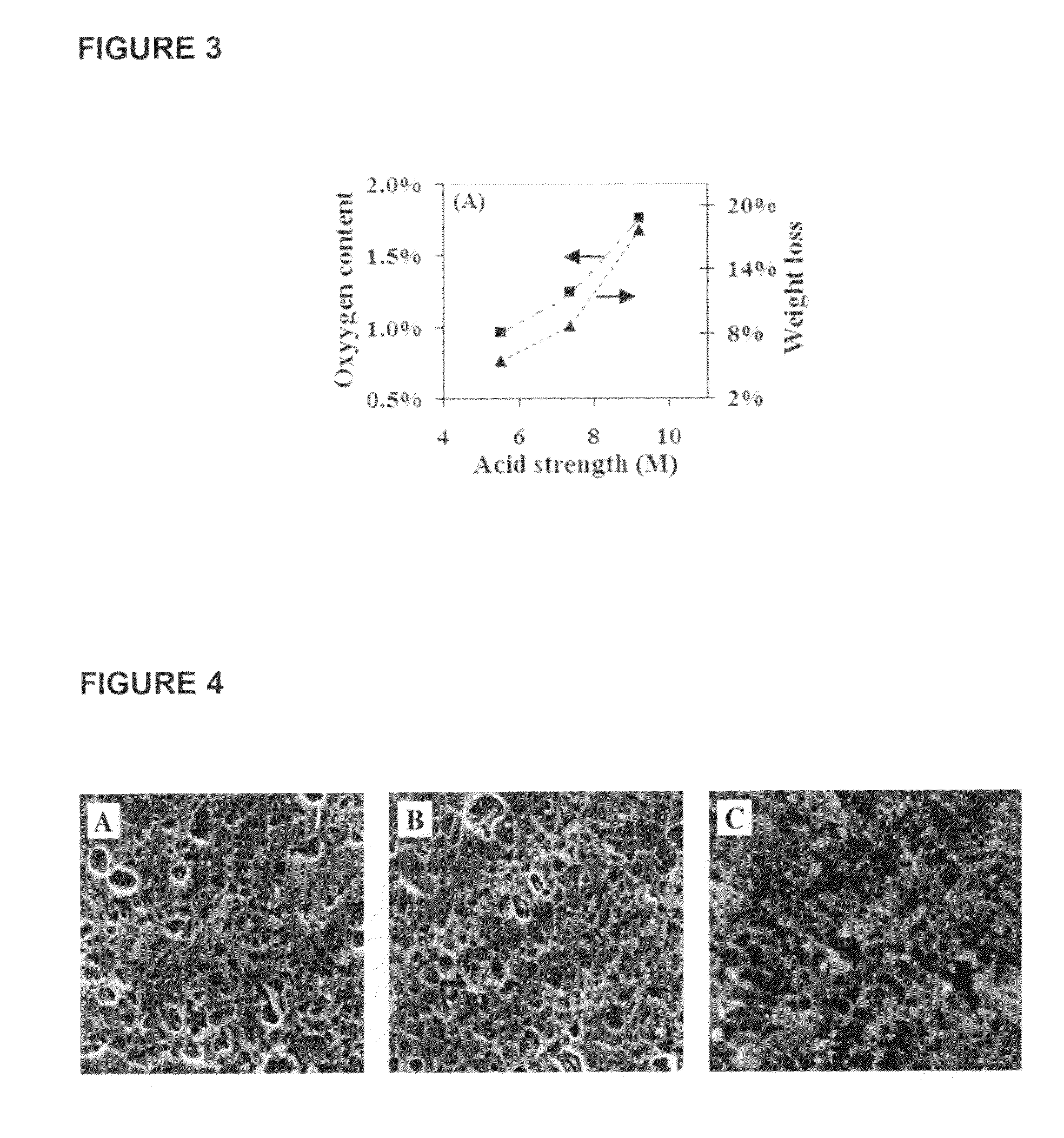Method of surface treatment of aluminum foil and its alloy and method of producing immobilized nanocatalyst of transition metal oxides and their alloys
a technology of transition metal oxides and alloys, applied in the field of surface etching, can solve the problems of brittleness and crumbling of anodized foil, chemical etching of thin aluminum foils, and high energy consumption of galvanostatic anodization, and achieve the effects of reducing aluminum content, reducing impurity content, and improving the effect of surface etching
- Summary
- Abstract
- Description
- Claims
- Application Information
AI Technical Summary
Benefits of technology
Problems solved by technology
Method used
Image
Examples
Embodiment Construction
(A) Surface Treatment of Foils
[0080]A method of surface treating an aluminum foil in accordance with the invention was conducted and includes the following exemplary steps:[0081]1. The aluminum foil surface was cleaned with acetone, then dried in air and thereafter thoroughly washing with deionized water.[0082]2. The aluminum foil was then dipped into an oxidizing solution containing a strong acid and a strong oxidant, as more fully detailed below, for a specified time, as more fully detailed below, under ambient conditions. The foil being dipped into the oxidizing solution so that both sides of the foil are uniformly coated and subsequently treated.[0083]3. The aluminum foil was then removed from the oxidizing solution after the specified time and was washed thoroughly in deionized water and subsequently air drying at room temperature.
[0084]A scanning electron microscope (SEM) was used to determine an image of the foil surface. The image of the surface showed that it was covered wi...
PUM
| Property | Measurement | Unit |
|---|---|---|
| depth | aaaaa | aaaaa |
| pore diameter size | aaaaa | aaaaa |
| diameter | aaaaa | aaaaa |
Abstract
Description
Claims
Application Information
 Login to View More
Login to View More - R&D
- Intellectual Property
- Life Sciences
- Materials
- Tech Scout
- Unparalleled Data Quality
- Higher Quality Content
- 60% Fewer Hallucinations
Browse by: Latest US Patents, China's latest patents, Technical Efficacy Thesaurus, Application Domain, Technology Topic, Popular Technical Reports.
© 2025 PatSnap. All rights reserved.Legal|Privacy policy|Modern Slavery Act Transparency Statement|Sitemap|About US| Contact US: help@patsnap.com



